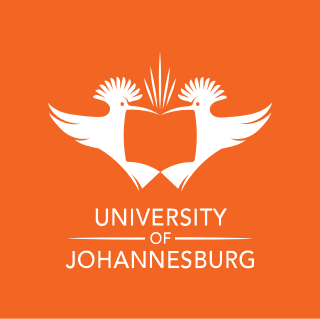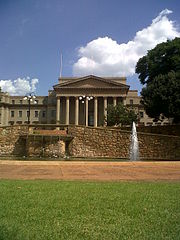
Chemical engineering is an engineering field which deals with the study of operation and design of chemical plants as well as methods of improving production. Chemical engineers develop economical commercial processes to convert raw materials into useful products. Chemical engineering uses principles of chemistry, physics, mathematics, biology, and economics to efficiently use, produce, design, transport and transform energy and materials. The work of chemical engineers can range from the utilization of nanotechnology and nanomaterials in the laboratory to large-scale industrial processes that convert chemicals, raw materials, living cells, microorganisms, and energy into useful forms and products. Chemical engineers are involved in many aspects of plant design and operation, including safety and hazard assessments, process design and analysis, modeling, control engineering, chemical reaction engineering, nuclear engineering, biological engineering, construction specification, and operating instructions.

Paper engineering is a branch of engineering that deals with the usage of physical science and life sciences in conjunction with mathematics as applied to the converting of raw materials into useful paper products and co-products. The field applies various principles in process engineering and unit operations to the manufacture of paper, chemicals, energy and related materials. The following timeline shows some of the key steps in the development of the science of chemical and bioprocess engineering:

The University of the Witwatersrand, Johannesburg, commonly known as Wits University or Wits, is a multi-campus public research university situated in the northern areas of central Johannesburg, South Africa. The university has its roots in the mining industry, as do Johannesburg and the Witwatersrand in general. Founded in 1896 as the South African School of Mines in Kimberley, it is the third oldest South African university in continuous operation.

Mining in the engineering discipline is the extraction of minerals from the ground. Mining engineering is associated with many other disciplines, such as mineral processing, exploration, excavation, geology, metallurgy, geotechnical engineering and surveying. A mining engineer may manage any phase of mining operations, from exploration and discovery of the mineral resources, through feasibility study, mine design, development of plans, production and operations to mine closure.

Biochemical engineering, also known as bioprocess engineering, is a field of study with roots stemming from chemical engineering and biological engineering. It mainly deals with the design, construction, and advancement of unit processes that involve biological organisms or organic molecules and has various applications in areas of interest such as biofuels, food, pharmaceuticals, biotechnology, and water treatment processes. The role of a biochemical engineer is to take findings developed by biologists and chemists in a laboratory and translate that to a large-scale manufacturing process.

The University of Johannesburg, colloquially known as UJ, is a public university located in Johannesburg, South Africa. The University of Johannesburg was established on the 1st of January 2005 as the result of a merger between the Rand Afrikaans University (RAU), the Technikon Witwatersrand (TWR) and the Soweto and East Rand campuses of Vista University. Prior to the merger, the Daveyton and Soweto campuses of the former Vista University had been incorporated into RAU. As a result of the merger of Rand Afrikaans University (RAU), it is common for alumni to refer to the university as RAU.
A bioprocess is a specific process that uses complete living cells or their components to obtain desired products.

Mehran University of Engineering & Technology is a public research university located in Jamshoro, Sindh, Pakistan focused on STEM education.
Bioprocess engineering, also biochemical engineering, is a specialization of chemical engineering or biological engineering. It deals with the design and development of equipment and processes for the manufacturing of products such as agriculture, food, feed, pharmaceuticals, nutraceuticals, chemicals, and polymers and paper from biological materials & treatment of waste water. Bioprocess engineering is a conglomerate of mathematics, biology and industrial design, and consists of various spectrums like the design and study of bioreactors to the creation of kinetic models. It also deals with studying various biotechnological processes used in industries for large scale production of biological product for optimization of yield in the end product and the quality of end product. Bioprocess engineering may include the work of mechanical, electrical, and industrial engineers to apply principles of their disciplines to processes based on using living cells or sub component of such cells.

The College of Engineering of the University of the Philippines Diliman is the largest degree-granting unit in the U.P. System in terms of student population. The college is also known formally as UP COE, COE, and informally as Eng'g.
Eckehard Specht is a professor in Otto von Guericke University, Magdeburg, Germany. He belongs to Institute of Fluid Dynamics and Thermodynamics (ISUT) department. His specializations are Combustion technology, heat and mass transfer, chemical process engineering, global warming, and ceramic materials.

William Bleloch was a South African metallurgist noted for developing smelting techniques for the processing of chrome ores. At a 1975 ceremony when the University of the Witwatersrand conferred upon him an honorary doctorate of Science and Engineering, the citation read "William Bleloch can truly be called the father of our electrochemical and electrometallurgical industries".
Doris Kuhlmann-Wilsdorf was a German metallurgist.

The Industrial and Mining Water Research Unit is one of several research entities based in the School of Chemical and Metallurgical Engineering at the University of the Witwatersrand, Johannesburg. It provides research as well as supervision to masters and doctorate students within the University, as well as consulting to industry.
Prafulla Kumar Jena was an Indian metallurgist who served as director of the National Institute for Interdisciplinary Science and Technology of the Council for Scientific and Industrial Research, Bhubaneshwar. He previously held the TATA Chair for the Distinguished Professor of Metallurgical Engineering at the Indian Institute of Technology, Kharagpur. He was awarded the Padma Shri, India's fourth highest civilian award, in 1977.
Anne Neville was the Royal Academy of Engineering Chair in emerging technologies and Professor of Tribology and Surface Engineering at the University of Leeds.
David Glasser is a South African engineer best known for his co-development of attainable region theory and research into improving the efficiency of chemical processes. In 2001 he was the inaugural recipient of the Harry Oppenheimer Fellowship Award. He has also been awarded the Bill-Neale May Gold Medal by the South African Institute of Chemical Engineers, as well as the Science for Society Gold Medal from the Academy of Science of South Africa.
Ashlie Martini is a tribologist and professor of mechanical engineering at University of California, Merced.
Binoy Kumar Saikia is a Principal Scientist at North East Institute of Science and Technology, Jorhat (NEIST), Assam, India. He is also the Group Leader of the Coal and Energy Research Group in the Materials Science and Technology Division of NEIST. His research interests span energy and environment in general and in particular chemistry and technology of coal, carbon and nano-materials, atmospheric aerosols, and air pollution. He has developed and patented, both in India and the US, a technology for the production of blue-fluorescent carbon quantum dots from Indian coal.
Thokozani Majozi is a South African chemical engineer. He has been the Dean of Engineering and the Built Environment at the University of the Witwatersrand since 2021. He holds the South African Research Chair in Sustainable Process Engineering at the same university. His research focuses on chemical process engineering, particularly batch chemical process integration.













